'A Room for London' by David Kohn and Fiona Banner
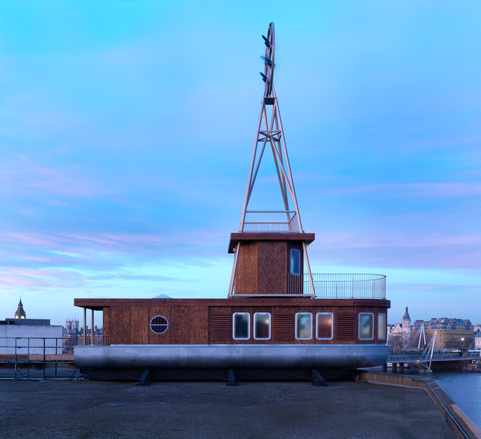
The worst thing we can say about David Kohn and Fiona Banner's 'A Room for London' is that far too few people will be able to experience it. The duo's collaboration with Alain de Botton's Living Architecture and Artangel, with the vital assistance of the Southbank Centre, takes the form of a colonial riverboat stranded atop the concrete, Thames-side Queen Elizabeth Hall and has a mysterious ghostly presence. The sudden sight of a stubby-bowed, top-heavy little tramp steamer indulges London's ability to conjure up the unexpected.
Yet this is no static sculpture. The first signs of life you'll see are the wind turbines spinning furiously atop the 'mast'. Look closer, though, and you might notice some movement within. The installation was designed to be occupied - hotel room as art - and from July, two guests each night will bed down in this strange otherworld, hoisted up high above the river.
It's no wonder 'A Room for London' has been booked solid since shortly after the reception opened in January: as well as all mod cons, crisp white sheets and the best views in town, it offers a carefully curated scattering of objects and artworks, helping to enliven your short, static voyage.
Access is via a dark corridor tucked into a concrete crevasse beneath the QEH. Ascend the creaking lift that was installed especially for the occasion and walk across the windswept rooftops and you arrive at the capital's most exclusive front door. Step inside and Kohn's design envelops and cocoons you.
The interior abounds with references, most especially to the work of Sir John Soane, who lends his richly polychromatic approach to the finely crafted timber walls and fittings. Above the small kitchen and dining area is a small 'bridge', a book-lined eyrie with access to a balcony on the 'prow'. This room is topped with a tiny crow's nest, tucked within the framework of the pyramidal steel mast (its proportions borrowed from Nicholas Hawksmoor's Christ Church in Spitalfields).
The artists' prime source of inspiration was the life and work of Joseph Conrad and all that sprang forth from his opus; the boat itself is named Roi des Belges, after the riverboat he captained down the Congo in 1890, the voyage that inspired Heart of Darkness. The atmosphere evokes the murky world of colonialism, with all the power imbalance, exploitation and terror that implies. Maps of the Congo are juxtaposed with those of the Thames; guidebooks offer a window onto the capital's netherworlds, forgotten and lost spaces; buried beneath folding picture frames, you might find a brooding portrait of the Roi des Belges himself, King Leopold, the very model of the tyrannical colonial ruler.
Banner and Kohn are essentially asking their guests to consider their surroundings. With London spread out before them in all its dynamic, crane-spiked glory, all that wealth garnered from centuries of trade and the spoils of the Empire, overnighters can lie back and think not just of England but of the many, perhaps disreputable ways the country found glory.
Receive our daily digest of inspiration, escapism and design stories from around the world direct to your inbox.
When the space isn't being lived in, a series of talks and performances will be given in the Room by a roster of invited writers, artists and musicians, including Imogen Heap, Laurie Anderson, Jeremy Deller and David Byrne. But for the casual visitor, 'A Room for London' will probably remain an enduring mystery. For the lucky few who get to step on board, the experience will be unforgettable.
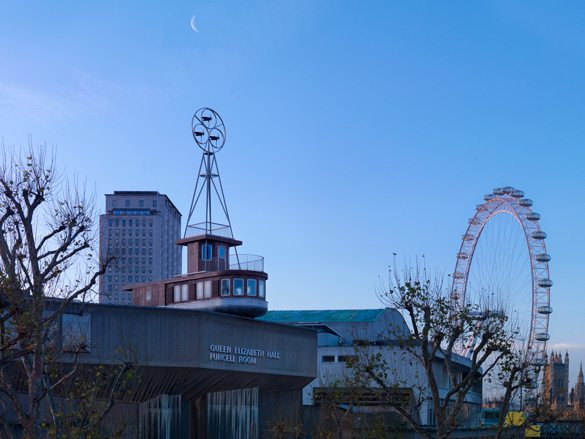
The duo's collaboration with Alain de Botton's Living Architecture and Artangel, with the vital assistance of the Southbank Centre, takes the form of a colonial riverboat stranded atop the concrete, Thames-side Queen Elizabeth Hall and has a mysterious ghostly presence
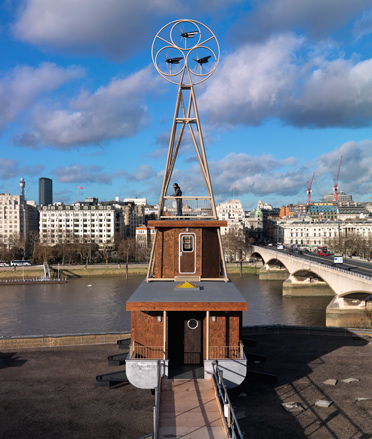
The sudden sight of a stubby-bowed, top-heavy little tramp steamer indulges London's ability to conjure up the unexpected
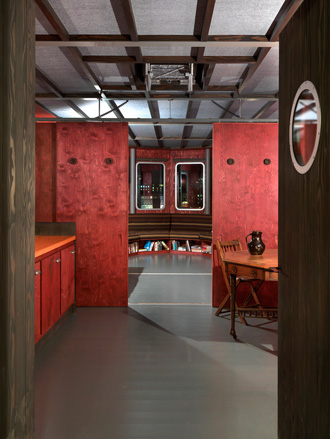
'A Room for London' has been booked solid since shortly after its opening reception in January: as well as all mod cons, crisp white sheets and the best views in town, it offers a carefully curated scattering of objects and artworks, helping to enliven your short, static voyage

Step inside and Kohn's design envelops and cocoons you. The interior abounds with references, most especially to the work of Sir John Soane, who lends his richly polychromatic approach to the finely crafted timber walls and fittings
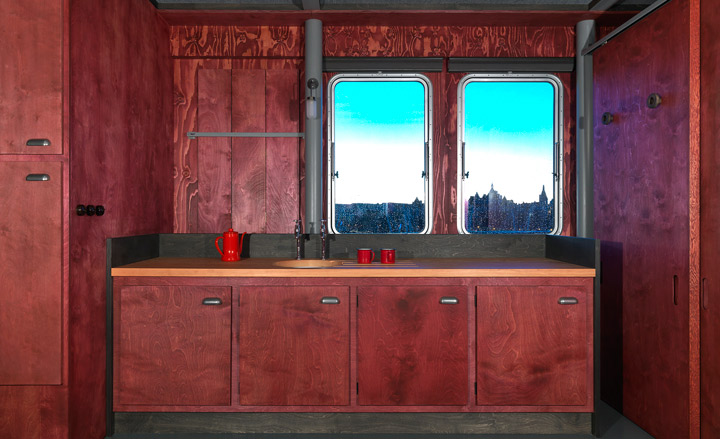
Above the small kitchen (pictured here) and dining area is a small 'bridge', a book-lined eyrie with access to a balcony on the 'prow'. This room is topped with a tiny crow's nest, tucked within the framework of the pyramidal steel mast (its proportions borrowed from Nicholas Hawksmoor's Christ Church in Spitalfields)

The artists' prime source of inspiration was the life and work of Joseph Conrad and all that sprang forth from his opus; the boat itself is named Roi des Belges, after the riverboat he captained down the Congo in 1890, the voyage that inspired Heart of Darkness

Banner and Kohn are essentially asking their guests to consider their surroundings. With London spread out before them in all its dynamic, crane-spiked glory, all that wealth garnered from centuries of trade and the spoils of the Empire, overnighters can lie back and think not just of England but of the many, perhaps disreputable ways the country found glory
Jonathan Bell has written for Wallpaper* magazine since 1999, covering everything from architecture and transport design to books, tech and graphic design. He is now the magazine’s Transport and Technology Editor. Jonathan has written and edited 15 books, including Concept Car Design, 21st Century House, and The New Modern House. He is also the host of Wallpaper’s first podcast.
-
 Men’s Fashion Week A/W 2026 is almost here. Here’s what to expect
Men’s Fashion Week A/W 2026 is almost here. Here’s what to expectFrom this season’s roster of Pitti Uomo guest designers to Jonathan Anderson’s sophomore men’s collection at Dior – as well as Véronique Nichanian’s Hermès swansong – everything to look out for at Men’s Fashion Week A/W 2026
-
 The international design fairs shaping 2026
The international design fairs shaping 2026Passports at the ready as Wallpaper* maps out the year’s best design fairs, from established fixtures to new arrivals.
-
 The eight hotly awaited art-venue openings we are most looking forward to in 2026
The eight hotly awaited art-venue openings we are most looking forward to in 2026With major new institutions gearing up to open their doors, it is set to be a big year in the art world. Here is what to look out for